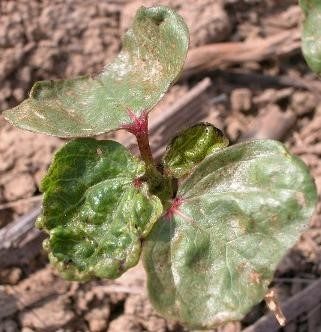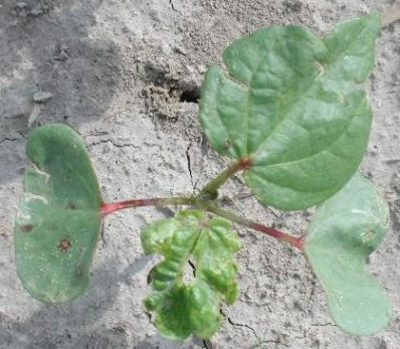Should You Spray for Cotton Thrips?
go.ncsu.edu/readext?529515
en Español / em Português
El inglés es el idioma de control de esta página. En la medida en que haya algún conflicto entre la traducción al inglés y la traducción, el inglés prevalece.
Al hacer clic en el enlace de traducción se activa un servicio de traducción gratuito para convertir la página al español. Al igual que con cualquier traducción por Internet, la conversión no es sensible al contexto y puede que no traduzca el texto en su significado original. NC State Extension no garantiza la exactitud del texto traducido. Por favor, tenga en cuenta que algunas aplicaciones y/o servicios pueden no funcionar como se espera cuando se traducen.
Português
Inglês é o idioma de controle desta página. Na medida que haja algum conflito entre o texto original em Inglês e a tradução, o Inglês prevalece.
Ao clicar no link de tradução, um serviço gratuito de tradução será ativado para converter a página para o Português. Como em qualquer tradução pela internet, a conversão não é sensivel ao contexto e pode não ocorrer a tradução para o significado orginal. O serviço de Extensão da Carolina do Norte (NC State Extension) não garante a exatidão do texto traduzido. Por favor, observe que algumas funções ou serviços podem não funcionar como esperado após a tradução.
English
English is the controlling language of this page. To the extent there is any conflict between the English text and the translation, English controls.
Clicking on the translation link activates a free translation service to convert the page to Spanish. As with any Internet translation, the conversion is not context-sensitive and may not translate the text to its original meaning. NC State Extension does not guarantee the accuracy of the translated text. Please note that some applications and/or services may not function as expected when translated.
Collapse ▲
Cotton that received this amount of injury would have benefited economically from a spray. At this point, a lot of the damage has already been done.
What is the growth stage of the cotton? I cannot stress the importance of this point. Cotton is the most susceptible by far before the two-leaf stage and adults prefer to lay their eggs in cotton during these stages. Cotton will take a yield hit up to the five leaf stage, but sprays at the four and five-leaf stage are typically for revenge, rather than yield. You can tank mix your insecticide with a post herbicide application. The decision you will likely make is whether to be timely for the weeds or the thrips.
What are your thrips numbers? Our threshold is two nymphs per seedling at or before the first leaf stage. Note the importance of spraying your cotton early. Finally, the majority of fields in our state without imidacloprid in-furrow will greatly exceed the economic threshold, justifying sprays.
When did you plant? On average, cotton planted after the 17 of May is safe from thrips. However, based on the Thrips Infestation Predictor for Cotton, cotton planted mid-May and later will be most at risk for thrips in 2018 throughout much of the state. This is because the two most critical factors for thrips injury in cotton are the “thrips flight” and how fast the cotton grows (cooler conditions mean slower grow off for the cotton). We had cool early spring conditions, with lots of rain that hampered thrips populations. These are recovering and are migrating into fields as winter hosts die off. Also keep in mind that pressure is relative. Cotton seedlings should be growing fast in this warm weather and we should have a lighter pressure year this year compared to the last two.
Did you use imidacloprid in-furrow? Our recommendation for the past few years has been to use the highest labeled rate of imidacloprid (Admire Pro) in-furrow overtop of insecticide-treated seed. The rationale for this is that, when the imidacloprid was applied correctly in replicated tests, a foliar spray for thrips was not necessary. Even though thrips were first identified as neonicotinoid resistant in 2014, the cotton seemed to take up enough insecticide with this shot in the furrow to overcome the thrips. For a number of years, we have had failures with this combination due to resistance or poor application. For example, if the in-furrow application method is not correct (not applied directly in-furrow with good insecticide to seed contact), you will likely need to spray. It would be a good idea to scout all cotton, even acres with an insecticidal seed treatment and Admire in-furrow for these reasons.



